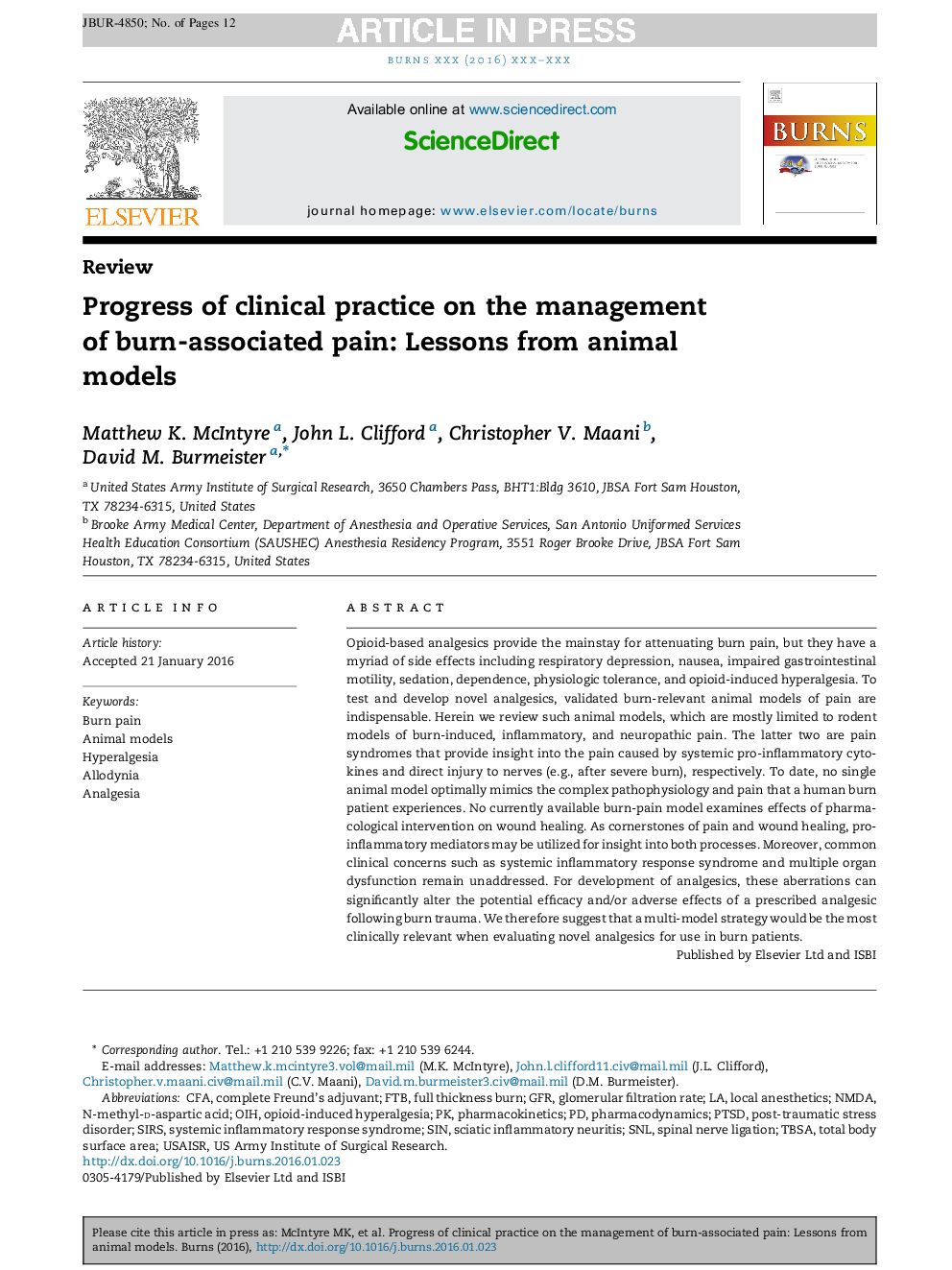| Article ID | Journal | Published Year | Pages | File Type |
|---|---|---|---|---|
| 5636320 | Burns | 2016 | 12 Pages |
Abstract
Opioid-based analgesics provide the mainstay for attenuating burn pain, but they have a myriad of side effects including respiratory depression, nausea, impaired gastrointestinal motility, sedation, dependence, physiologic tolerance, and opioid-induced hyperalgesia. To test and develop novel analgesics, validated burn-relevant animal models of pain are indispensable. Herein we review such animal models, which are mostly limited to rodent models of burn-induced, inflammatory, and neuropathic pain. The latter two are pain syndromes that provide insight into the pain caused by systemic pro-inflammatory cytokines and direct injury to nerves (e.g., after severe burn), respectively. To date, no single animal model optimally mimics the complex pathophysiology and pain that a human burn patient experiences. No currently available burn-pain model examines effects of pharmacological intervention on wound healing. As cornerstones of pain and wound healing, pro-inflammatory mediators may be utilized for insight into both processes. Moreover, common clinical concerns such as systemic inflammatory response syndrome and multiple organ dysfunction remain unaddressed. For development of analgesics, these aberrations can significantly alter the potential efficacy and/or adverse effects of a prescribed analgesic following burn trauma. We therefore suggest that a multi-model strategy would be the most clinically relevant when evaluating novel analgesics for use in burn patients.
Keywords
CFAFTBFull thickness burnOIHSNLTBSAGFRNMDASIRSN-methyl-d-aspartic acidcomplete Freund's adjuvantAllodyniapost-traumatic stress disorderPTSDsinLocal anestheticsAnalgesiaBurn painTotal body surface areaSystemic inflammatory response syndromePharmacodynamicsPharmacokineticsAnimal modelsGlomerular filtration rateOpioid-induced hyperalgesiaHyperalgesiaspinal nerve ligation
Related Topics
Health Sciences
Medicine and Dentistry
Critical Care and Intensive Care Medicine
Authors
Matthew K. McIntyre, John L. Clifford, Christopher V. Maani, David M. Burmeister,
